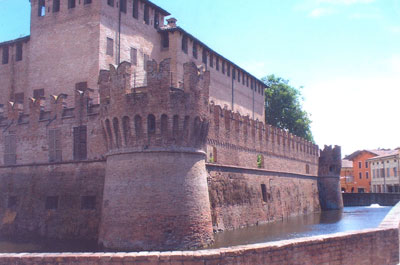The castles of Parma
My wife, Rosalie, and I spent our 45th wedding anniversary in Italy, May 21-June 10, 2009. One of the places we visited was the municipality of Parma in the province of Emilia-Romagna. This area, which has long been overlooked by tourists, is noted for its numerous castles and châteaux similar to those of France’s Loire Valley.
We chose the town of Soragna as a base from which to tour the area. Soragna is located just south of the Po River and about a half-hour drive northwest of the city of Parma, which is noted for its cathedral and opera house.
We stayed at the Locanda del Lupo (Via Garibaldi, 64, Soragna; phone 39 0524 597100, www.locandadellupo.com), a 4-star hotel. A standard double room with air-conditioning and private bath cost €110 (then, about $158), including breakfast. Our room was lovely and more than adequate for our needs.
We took a tour of Rocca Meli Lupi di Soragna (Piazza Meli Lupi 5), a fortress built by the Marchesi Bonifacio in 1385. The castle was originally built as a military garrison, but in time it became a splendid royal palace.
Visitors cannot tour the castle on their own, so we were required to take the tour, which was in Italian. However, we were given some literature in English that explained the various rooms we were seeing. Entry cost €7.50 and the castle was closed on Mondays.
We also visited Soragna’s Synagogue and Jewish Museum (Via Cavour 43; phone 39 0524 599399) as well as the Museo del Parmigiano Reggiano (phone 39 0524 596129, www.museidelcibo.it), a Parmesan cheese museum. Both the synagogue and cheese museum were a short walk from the castle and within walking distance of our hotel.
A 12-minute drive southeast of Soragna brought us to the town of San Secondo Parmense. On the day we visited (Sunday, June 7), a palio was being held, with each district in the area putting up a horse to race. Many of the residents were dressed in medieval costume, and there was flag throwing and singing and festivities, culminating with the horse race late in the afternoon.
San Secondo Parmense’s palio is held annually on the first Sunday in June. In the main square there were numerous arts-and-crafts booths selling all kinds of locally made goods. I think we were the only foreigners attending, as we heard no language other than Italian.
For more information, the San Secondo Parmense tourist office is located at Via Melloni, 1 (phone 39 0521 218889).
Just a few minutes south is the medieval town of Fontanellato with its impressive castle still surrounded by a moat. The castle, Rocca Sanvitale, retains its medieval charm.
Southwest of Fontanellato is the town of Fidenza, noted for its numerous designer outlet stores offering goods at discounted prices. However, with the value of our dollar versus the euro, we felt that the prices were high compared to outlet shopping in the US.
The town also features a castle, churches and an opera house, all of which are open to the public. For more information, e-mail infoturist
@comune.fidenza.pr.it.
Fifteen minutes west of our base in Soragna was the town of Busseto, the childhood home of Giuseppe Verdi. We visited the house in which he was born, in Roncole Verdi, and his mansion in Sant’Agata, both just a few minutes’ drive from Busseto.
For a list of other castles and châteaux in the area, visit the website of the Associazione Castelli del Ducato di Parma e Piacenza (www.castellidelducato.it) or phone 0521 829055.
GERALD BITMAN
Lake Worth, FL

